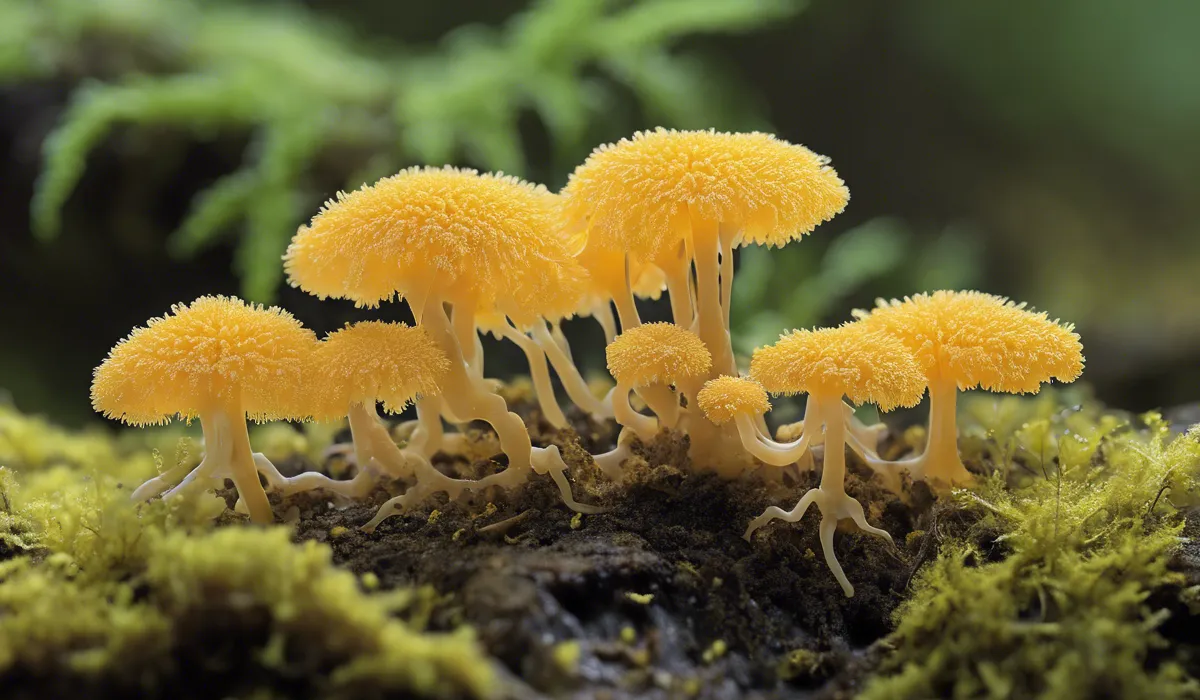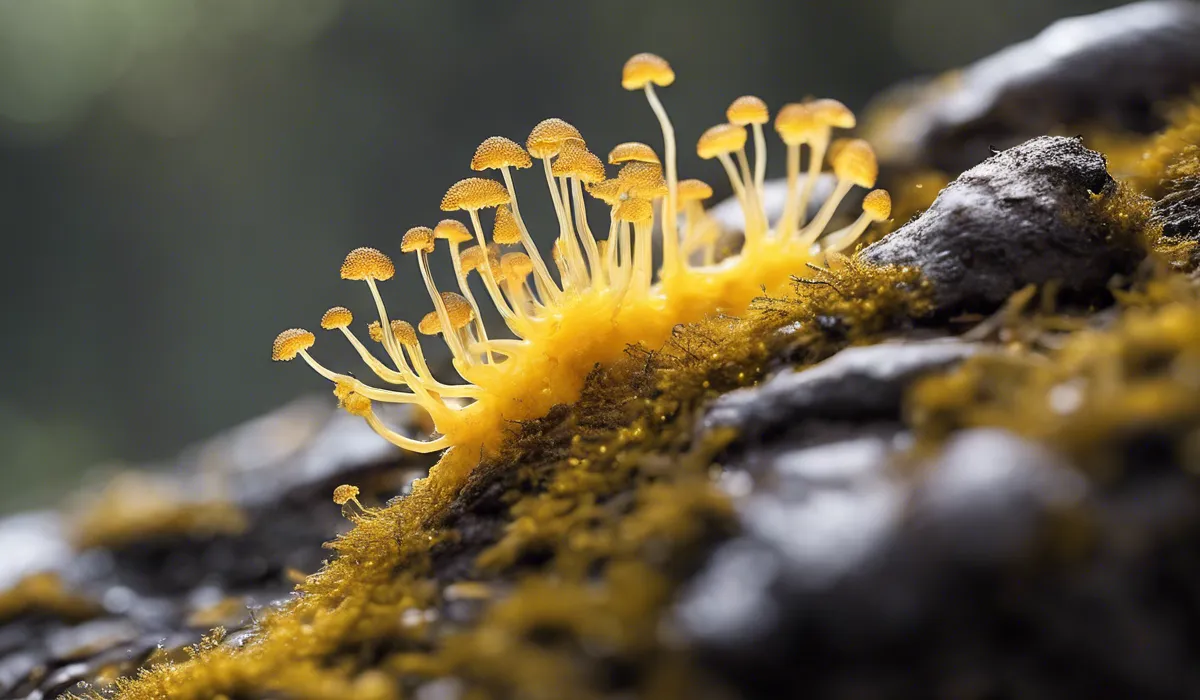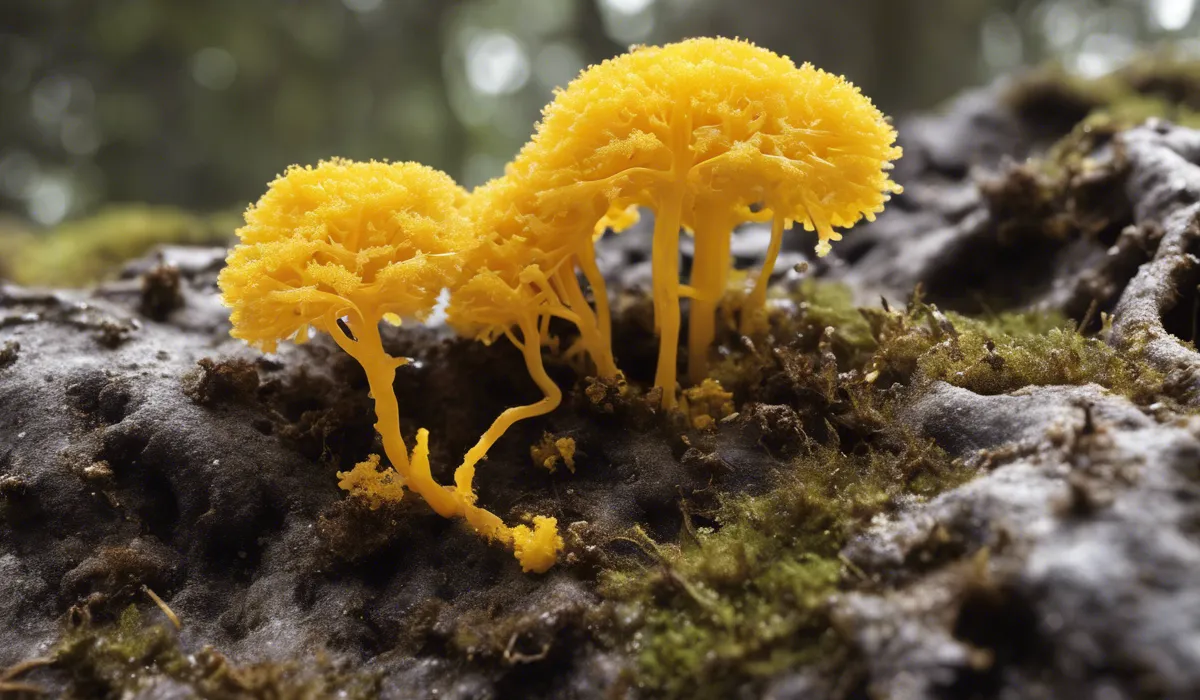A slime mold is a unicellular organism that exhibits behaviors similar to fungi. They thrive in moist, dark environments and feed on microorganisms. Slime molds are known for their unique life cycle, transitioning between single-cell and multicellular states during their life.
Understanding Slime Molds: Definition and Characteristics

Definition of Slime Mold
Slime molds are fascinating organisms that capture the curiosity of scientists and nature enthusiasts alike. These organisms are not plants, animals, or fungi.
Instead, they form a special group known as protists. What makes slime molds remarkable is their ability to live as single cells but also to come together and act as a collective unit when conditions are right.
They are most commonly found in moist, shady environments where they feed on bacteria, yeast, and other microorganisms.
Distinction Between Slime Molds and Fungi
While slime molds and fungi may look similar, they are quite different. Fungi are a kingdom of their own, separate from other life forms.
Slime molds, on the other hand, belong to the kingdom Protista. They differ in their life cycles, cellular structure, and methods of obtaining food.
Fungi absorb nutrients from their environment, whereas slime molds can engulf food particles. This feeding method is more similar to the behavior of amoebas, another type of protist.
Types of Slime Molds
There are two main types of slime molds: plasmodial and cellular. Plasmodial slime molds are essentially a giant cell with multiple nuclei, formed when individual cells merge and their cell walls dissolve.
These large masses, known as plasmodia, can move and engulf food sources. Cellular slime molds, however, live as individual cells until food becomes scarce.
At that point, they come together to form a multicellular organism known as a slug, which can move and form a fruiting body to disperse spores.
Physical Description and Life Cycle Stages
Slime molds have a unique appearance and an intriguing life cycle. In the plasmodial stage, they can look like oozing, colorful blobs on decaying wood or leaves.
When conditions are harsh, they form a fruiting body to reproduce by releasing spores. These spores can lie dormant until conditions improve, at which point they hatch into amoeba-like cells.
Cellular slime molds have a similar process, but the cells keep their individual walls until they aggregate to form the slug and subsequent fruiting body.
Unique Features
One of the most astounding features of slime molds is their ability to exhibit intelligent behavior without having a brain.
They can navigate mazes, optimize nutrient absorption, and even seem to have memory. This is due to their sophisticated chemical signaling processes.
By releasing and sensing chemical gradients in their environment, slime molds can find the most efficient paths to food sources and avoid obstacles without a central nervous system.
Slime Molds in the Environment and Their Ecological Role

Habitats Commonly Occupied by Slime Molds
Slime molds are often found in dark, moist environments such as forest floors, gardens, and compost heaps.
They thrive in these habitats because of the abundance of organic material, which provides them with the microorganisms they need to feed on.
You might spot slime molds on rotting logs, leaf litter, or even in the grass after a rain, as they are not restricted to one type of habitat and can adapt to various conditions.
Role in Decomposition and Nutrient Cycling
Decomposition is a vital ecological process, and slime molds play an important role in it. By consuming bacteria and other microorganisms, they help break down dead organic matter.
This decomposition releases nutrients back into the soil, making them available for plants and other living organisms.
Slime molds, therefore, are crucial in maintaining the balance of ecosystems by aiding in the nutrient cycling process.
Symbiotic and Competitive Interactions with Other Organisms
Slime molds interact with other organisms in various ways. They can engage in symbiotic relationships, where both organisms benefit.
For example, some types of bacteria thrive within the slime mold, enjoying protection while providing the slime mold with nutrients.
Conversely, slime molds can also compete with other decomposers, like fungi, for food resources, maintaining a balance within their ecosystems.
Contribution to Soil Health and Ecosystem Functioning
By breaking down organic matter and returning nutrients to the soil, slime molds contribute significantly to soil health.
They help create a rich, fertile environment that supports plant growth and biodiversity. As part of a complex food web, the presence of slime molds is an indicator of a healthy ecosystem.
They are small yet mighty players in maintaining the balance and productivity of natural environments.
Slime Molds in Research and Cultural Impact

Scientific Studies on Slime Mold Intelligence and Problem-Solving
Researchers are continually amazed by the problem-solving abilities of slime molds. Studies have shown that these organisms can solve complex puzzles, such as finding the shortest path through a maze to reach a food source.
This ‘intelligence’ is due to their unique biological processes, which scientists are studying to understand decision-making and biological computation without a central nervous system.
Use of Slime Molds in Network Optimization Research
The ability of slime molds to find efficient pathways has led to their use in network optimization research.
By simulating transport networks, like roads or railways, researchers observe how slime molds create efficient networks between food sources.
These observations can inspire more efficient designs for human-made systems, such as urban planning and computer networking.
Examples of Slime Molds in Popular Media and Art
Slime molds have captured the public’s imagination and have been featured in various forms of media and art.
Documentaries have been made about their unique behaviors, and they have inspired artists to create works that mimic their growth patterns and movements.
The striking visuals of slime molds make them a subject of intrigue beyond the scientific community.
Potential Applications of Slime Mold Behavior in Technology and Design
The problem-solving behavior of slime molds has potential applications in technology and design.
By understanding how slime molds operate, engineers and designers can create innovative solutions that mimic their efficiency and adaptability.
For instance, algorithms based on slime mold behavior could improve network designs, and their resilience and self-organizing properties could inspire new materials and structures in architecture.
FAQs About Slime Molds
What exactly is a slime mold?
A slime mold is an organism that shares characteristics with both fungi and amoebae, living mostly in moist and dark environments, and can transition between single-celled and multicellular states.
Are slime molds considered fungi?
No, slime molds are not true fungi, although they exhibit similar behaviors and were once classified as fungi. They belong to a different group of organisms known as protists.
How do slime molds feed?
Slime molds feed on microorganisms in their environment, such as bacteria, yeast, and fungi, by engulfing them through a process similar to phagocytosis.
What triggers a slime mold to change from single-cell to multicellular?
Environmental conditions such as food scarcity can trigger a slime mold to aggregate and form a multicellular structure, allowing them to move and function as a single entity to find new food sources.
Where can slime molds be found?
Slime molds are commonly found in moist, shady environments like forest floors, where they thrive on decaying plant material and other organic matter.
Final Thoughts
Slime molds are unique organisms that blur the lines between single-celled and multicellular entities.
Despite being unicellular, they behave similarly to fungi, thriving in damp, shadowy habitats and consuming microorganisms.
Their life cycle is particularly notable for its ability to switch from solitary to collective living forms, demonstrating complex behaviors not typically associated with single-celled organisms.
